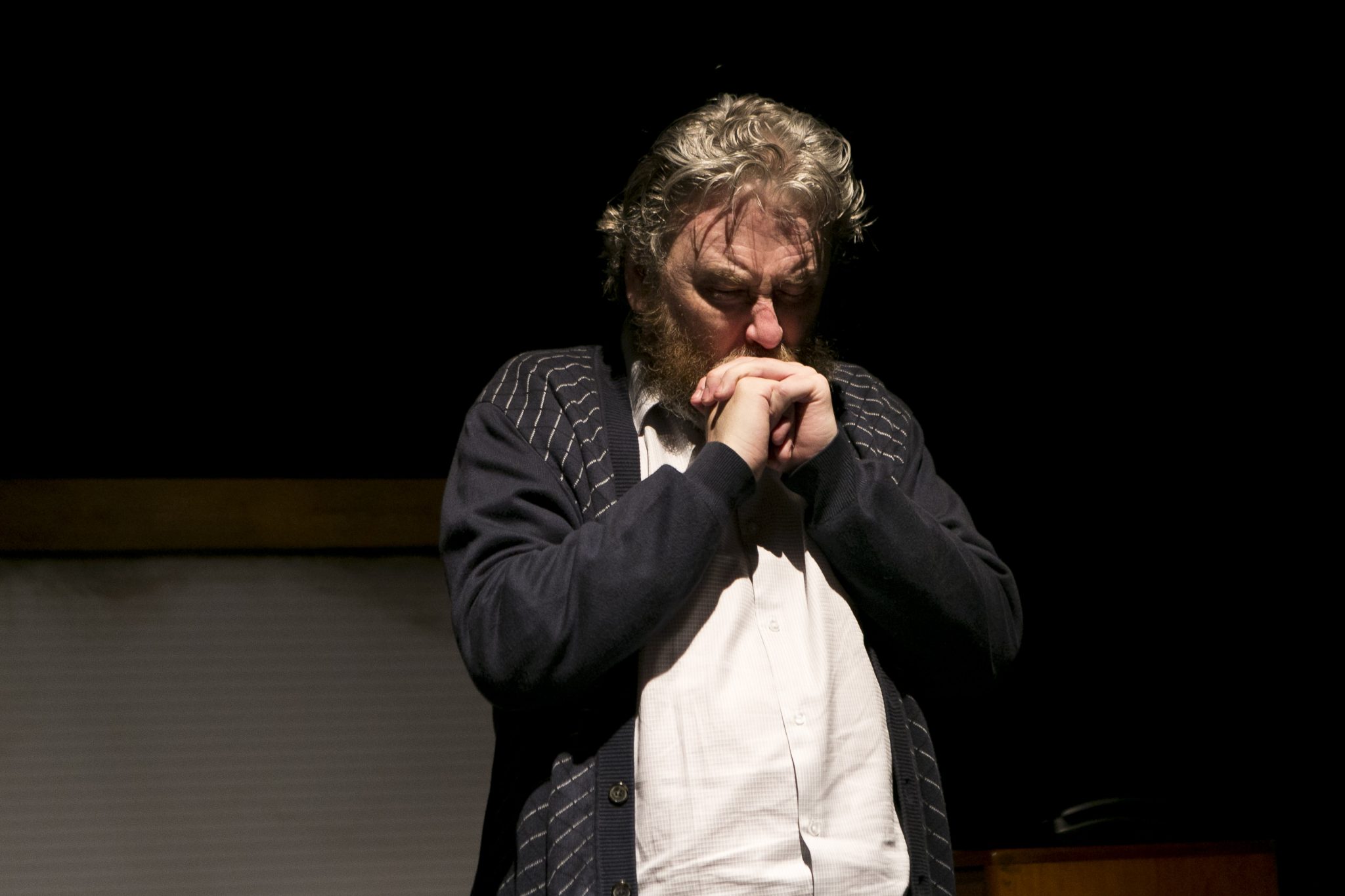Walking into the Demonstration Room, an old lecture theatre – with its raised seated rows and old plastic curtains hanging up – feels like the perfect setting for what writer Gary McNair has in store for us. Looking down on actor George Docherty as he tells us what happened to his wife, Agnes – warning us that this tale is “not about innocent or guilt” but rather “needs must” – feels like the hour of judgement has come for James Anthony Baxter.
The future that MacNair imagines in 25 years or so – with the NHS a thing of the past and inflation leaving biscuit bars costing an arm and a leg (well, almost) – is only briefly referenced. Very quickly, the private healthcare route is no longer an option for Agnes – and likely, not many other people, with cotton wool costing £14 and even cups of water carrying a charge. That said, it does feel like the possibility of seeking proper medical treatment is abandoned prematurely. The idea that they need to take matters into their own hands is planted very early on.
Not that this is unheard of. In the world of After the Cuts, selling organs on the black market appears to be the norm, with everyone trying to find a way to make ends meet. As for Jim and Agnes’ situation, the rationale for going to such lengths, surprisingly, comes from Agnes herself (portrayed here by Pauline Knowles). Hearing her reason with Jim, telling him that she would rather try to live rather than let her health continue to deteriorate, shows that, really, there is no other option.
However, Agnes is very much the secondary figure within this drama, with After the Cuts focusing primarily on how Jim tries to find a solution to her illness. The play would benefit from explicitly showing her health worsening, and perhaps even some degree of fear about her potential fate (rather than stressing herself with meditating).
The sparsely furnished and decrepit-looking living room set serves the action well. For those who are perhaps a little queasy by the sight of blood, the backdrop may fool you into thinking that any gory moments within the play will be carried out behind a screen. Instead, we are forced to gaze into Jim’s makeshift operating theatre, with the hardware tools laid out for future use inciting incredulous mutterings from the audience. Real care has been taken in making this scene realistic, and the tension induced can be cut with a knife (or box cutter).
What’s not effective in After the Cuts, however, is the music. The melancholic melody repeated – intending to pull at our heartstrings – takes away from the performance. It tries unnecessarily to remind us that Jim’s actions are out of love for his wife, rather than a mere need to be helpful in some way – “the fixer of things”.
After the Cuts has the potential to offer a hard-hitting piece of theatre about what the future may be like if public healthcare were to disappear. However, Agnes’ passivity towards her illness and dismal situation means that After the Cuts lacks some needed pace or urgency. It is almost too understated in its acceptance of what society has become.
It is only in the very final moments of the play that we find our own heartbeat quicken, anxious to know the patient’s outcome.
